ROHRERSVILLE — For decades, Hunt Prothro has lived a somewhat bohemian life.
After growing up in California, he abandoned the discipline of the U.S. Naval Academy for more philosophical pursuits, eventually studying theology at the same Indiana college former Vice President Mike Pence attended. That he didn’t believe in God didn’t quell his fascination with the world’s religions.
“I did begin thinking later in high school that I was more suited to the humanities,” he says. What he didn’t know then was that he’d eventually craft a career as a professional potter — exhibiting around the country and teaching the art for more than 40 years at the prestigious Sidwell Friends School in Washington, where he counted Sasha and Malia Obama, daughters of former President Barack Obama, among his students.
He’s retired from Sidwell now, but hasn’t given up teaching. The Herald-Mail caught up with him as work was being completed on a workshop space at his South County studio, where he plans to conduct weekend master classes.
He plans to open it to friends and colleagues next month.
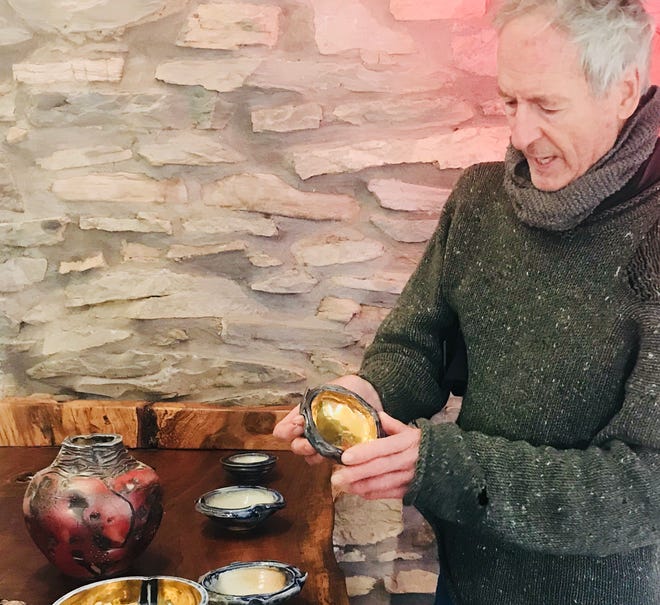
I thought ‘this is just a hobby’
Talk to him for a few minutes, and you quickly realize Prothro takes a cerebral approach to creating art — translating his intellectual interests into everyday life.
But it was an unusual journey from his original plan to become an engineer to his devotion to a more aesthetic kind of life.
Prothro’s experience at the Naval Academy had started well. He was just 17, he said, and had performed well in the summer activities that preceded his first academic term.
“And then boom, in the fall I just fell apart,” he said. “It was like, oh, I hate this; I hate everything about it. And it was sort of a surprise. I think my parents were not surprised … they didn’t really want me to go there. I just always thought that I would go to the Naval Academy.”
He worked in construction for a while and took some pottery classes. “And I just sort of liked it. But I thought this is just a hobby, this is kind of interesting.”
He wanted to go back to school, so he called a friend and asked about going to his school.
That was Hanover College, a private school in Hanover, Ind. “I’d never been to Indiana,” Prothro said. “I knew nothing about it.” But off he went, with plans to study English literature.
Even though Hanover was a small school, he was exposed to heavy doses of the humanities. Theater, history, economics, theology — and a pottery program.
“There was a tiny studio with a recently hired teacher who had trained as a potter,” he said.
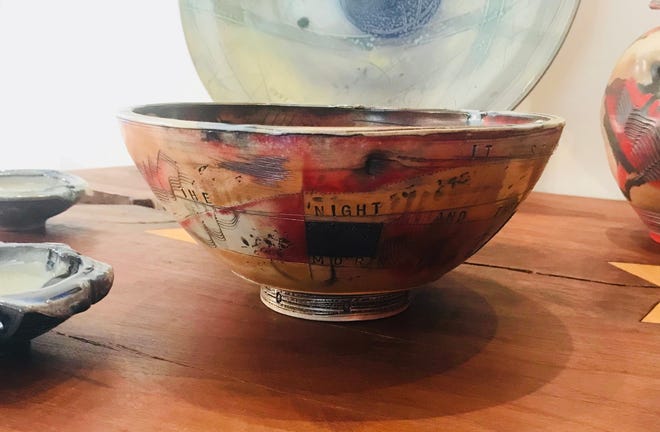
It all fit with the “new” life he was making for himself, without the rigors of engineering or the military. Now he was interested in being an artist or a writer.
“I was the editor of the college literary magazine for two years, and I did theater and I did pottery all as a hobby” while studying theology, he said.
His theology instructors, he said, were “interested in the mythic structures of religion, and so I was interested in a mythic structure of daily life.” Their influence “was hugely important, and most of it had to do with storytelling and mythologies.”
He’d developed an interest in rock climbing while growing up in California, and made frequent summer trips back during the early 1970s to climb — and to take more pottery classes, this time from Bauhaus-trained potter Marguerite Wildenhain, well-known as the other of “Pottery, Form and Expression.”
He’d read the book before he met her, he said, “and I thought this sounds like the kind of person that I would study with.”
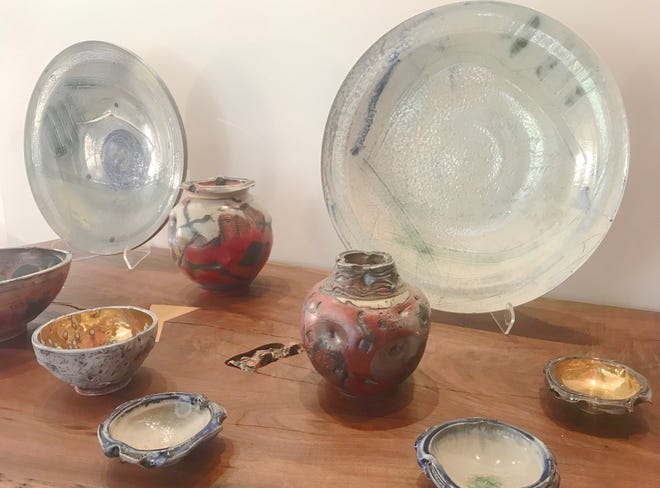
She was French, and her European influence resonated with him. That combined with the impact of his studies in the humanities became a foundation for creativity and affected his art — and gave him an ambitious goal.
“I’m shooting for the honor and the prestige of the ancients,” he says. “The ancients whose work we have kept are really good, because of you keep it, if human beings keep things, it is huge.
“Everything gets thrown away, things disappear … but works of art, anything that’s kept … if people keep things over the generations, these are powerful. And the people who make them are amazing. And so that’s the company you want to be in.”
‘This is magic’
Prothro eventually returned to the Washington, D.C., area, married and began teaching at Montgomery College. He was introduced to another teacher who taught printmaking, painting and pottery at Sidwell Friends School, and when she took a sabbatical to study in Great Britain, he filled in at Sidwell and ended up staying more than 40 years.
During that time, Prothro and his first wife moved to southern Washington County.
“My wife kind of wanted to start gardening. She wanted a house and it was logical,” he said. She was a toy designer, and his teaching schedule was only a few days a week — otherwise they were both working at home. “We were going to move to the country and live in the country and grow food and have a self-sufficient life and build a house and build a studio.”
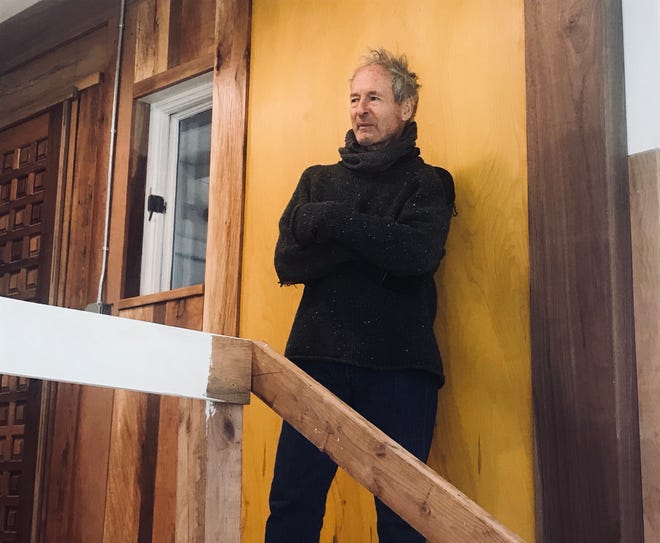
He was close enough to Sidwell, his friends and clients, and there was opportunity to climb. He remodeled a 19th-century home to live in that now contains a lot of his work — “there’s just a huge amount of story in every single piece here,” he says — and developed a home studio on the property.
It’s that studio he’s been renovating to continue teaching, adding workshop space downstairs from his personal studio.
“This is a student space,” he says, “but it’s so nice I’ll probably end up working down here, too, because I’m not intending on having people here all the time.”
He’s primarily planning three-day weekend master classes, but also is considering entry-level tutorials for those without pottery experience, and letting other artists use the space to conduct their own workshops.
The new studio space has lots of windows, taking advantage of the South County scenery and providing plenty of light.
“Since we started working down here and I realized how beautiful the view was, I just thought, ‘You’ve gotta have all windows,'” Prothro said.
It’s a two-level space, with sinks and work areas, highlighted with green and yellow accent walls. Even pottery pieces that don’t make it into his shows or sales play a role in the decor, peeking through slabs in the studio and in various places outside the building, too. That’s a result of the influence of Spanish architect and designer Antoni Gaudi, who used shards and ceramic work in his creations.
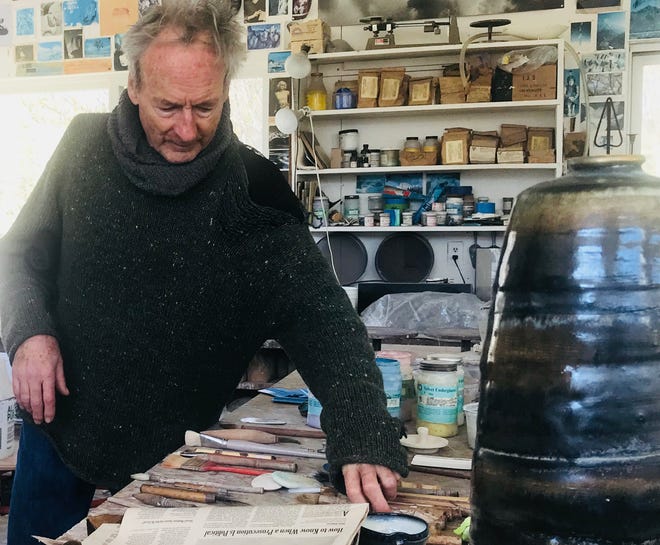
Upstairs in his own studio, its walls covered with drawings and tables cluttered with instruments, Prothro reveals one of the benefits of life as an artist.
“I love working in here,” he says. “If ever I feel somewhat despondent or put upon by life or any kind of worry, and I’m in here working, it just goes away.
“Every time I’m on the wheel or painting or sitting in the studio, I just look around and think ‘this is magic.'”
Coming to the Washington County Museum of Fine Arts this fall: A Picasso exhibition